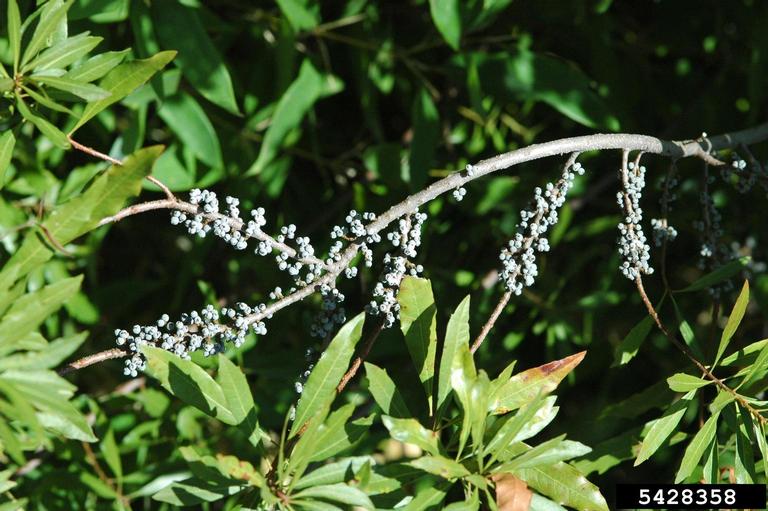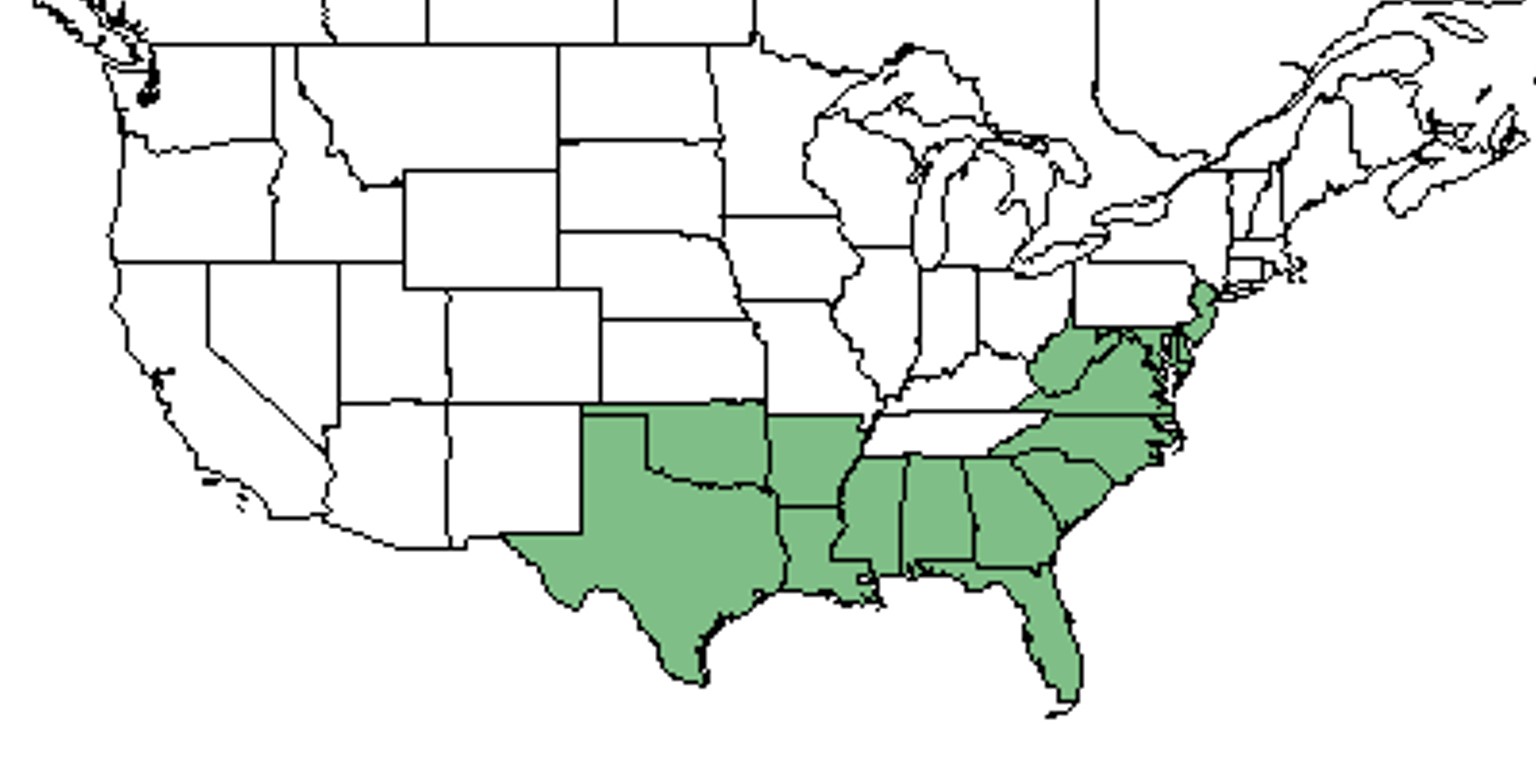Difference between revisions of "Morella cerifera"
Lsandstrum (talk | contribs) |
|||
| Line 32: | Line 32: | ||
==Ecology== | ==Ecology== | ||
===Habitat=== <!--Natural communities, human disturbed habitats, topography, hydrology, soils, light, fire regime requirements for removal of competition, etc.--> | ===Habitat=== <!--Natural communities, human disturbed habitats, topography, hydrology, soils, light, fire regime requirements for removal of competition, etc.--> | ||
| − | Is naturally found in interdune swales, pocosins, brackish marshes, and other wet to moist habitats. <ref name="Weakley 2015"/> Is widely planted as an ornamental or as a landscaping shrub. <ref name="Weakley 2015"/> | + | Is naturally found in interdune swales, pocosins, brackish marshes, and other wet to moist habitats. <ref name="Weakley 2015"/> Is widely planted as an ornamental or as a landscaping shrub. <ref name="Weakley 2015"/> ''M. cerifera'' responds positively to agricultural-based soil disturbance in South Carolina coastal plain communities. This marks it as an indicator species for post-agricultural woodland.<ref>Brudvig, L.A., E Grman, C.W. Habeck, and J.A. Ledvina. (2013). Strong legacy of agricultural land use on soils and understory plant communities in longleaf pine woodlands. Forest Ecology and Management 310: 944-955.</ref> |
| + | |||
===Phenology=== <!--Timing off flowering, fruiting, seed dispersal, and environmental triggers. Cite PanFlora website if appropriate: http://www.gilnelson.com/PanFlora/ --> | ===Phenology=== <!--Timing off flowering, fruiting, seed dispersal, and environmental triggers. Cite PanFlora website if appropriate: http://www.gilnelson.com/PanFlora/ --> | ||
Flowers in April, and also from August to October. <ref name="Weakley 2015"/> | Flowers in April, and also from August to October. <ref name="Weakley 2015"/> | ||
Revision as of 20:29, 2 July 2019
| Morella cerfiera | |
|---|---|

| |
| Photo by Karan A. Rawlins, University of Georgia, Bugwood.org | |
| Scientific classification | |
| Kingdom: | Plantae |
| Division: | Tracheophyta- Vascular plants |
| Class: | Magnoliopsida – Dicotyledons |
| Order: | Fagales |
| Family: | Myricaceae |
| Genus: | Morella |
| Species: | M. cerfiera |
| Binomial name | |
| Morella cerfiera (L.) Small | |

| |
| Natural range of Morella cerfiera from USDA NRCS Plants Database. | |
Common names: Common waxmyrtle; Southern bayberry
Contents
Taxonomic notes
Synonyms: Myrica cerifera L.; Myrica cerifera Linnaeus var. cerifera; Morella cerifera (Linnaeus) Small; Cerothamnus ceriferus (Linnaeus) Small
Description
"Dioecious or monoecious shrubs or small trees, with brown to brownish-black, pubescent to glabrate twigs. Leaves deciduous or semi-evergreen, coriaceous, petiolate, exstipulate. Staminate catkins ovoid-cylindric, 0.6-2 cm long, 4-6 mm in diam.; bracteate and bracteolate; stamens 2-1, mostly 2-5. Pistillate catkins ovoid or cylindric, 5-10 mm long, deciduous-bracteate. Fruits drupaceous, white, globose, verrucose, 2.5-7 mm in diam. A taxonomically difficult group with intergrading species." [1]
"Shrub or small tree, 0.3-7 m tall. Leaves oblanceolate or elliptic, to 8 cm long and 2cm wide, heavily resinous on both surfaces, usually pubescent beneath, acute or obtuse, serrate or entire, base cuneate to attenuate, petioles to 1 cm long. Fruits 2.5-3.5 mm in diam." [1]
Distribution
Is found within the Coastal Plain and as far north as New Jersey. [2]
Ecology
Habitat
Is naturally found in interdune swales, pocosins, brackish marshes, and other wet to moist habitats. [2] Is widely planted as an ornamental or as a landscaping shrub. [2] M. cerifera responds positively to agricultural-based soil disturbance in South Carolina coastal plain communities. This marks it as an indicator species for post-agricultural woodland.[3]
Phenology
Flowers in April, and also from August to October. [2]
Conservation and management
Cultivation and restoration
Photo Gallery
References and notes
- ↑ 1.0 1.1 Radford, Albert E., Harry E. Ahles, and C. Ritchie Bell. Manual of the Vascular Flora of the Carolinas. 1964, 1968. The University of North Carolina Press. 360. Print.
- ↑ 2.0 2.1 2.2 2.3 Weakley, Alan S. Flora of the Southern and Mid-Atlantic States: Working Draft of 21 May 2015. University of North Carolina Herbarium (NCU). PDF. 644.
- ↑ Brudvig, L.A., E Grman, C.W. Habeck, and J.A. Ledvina. (2013). Strong legacy of agricultural land use on soils and understory plant communities in longleaf pine woodlands. Forest Ecology and Management 310: 944-955.